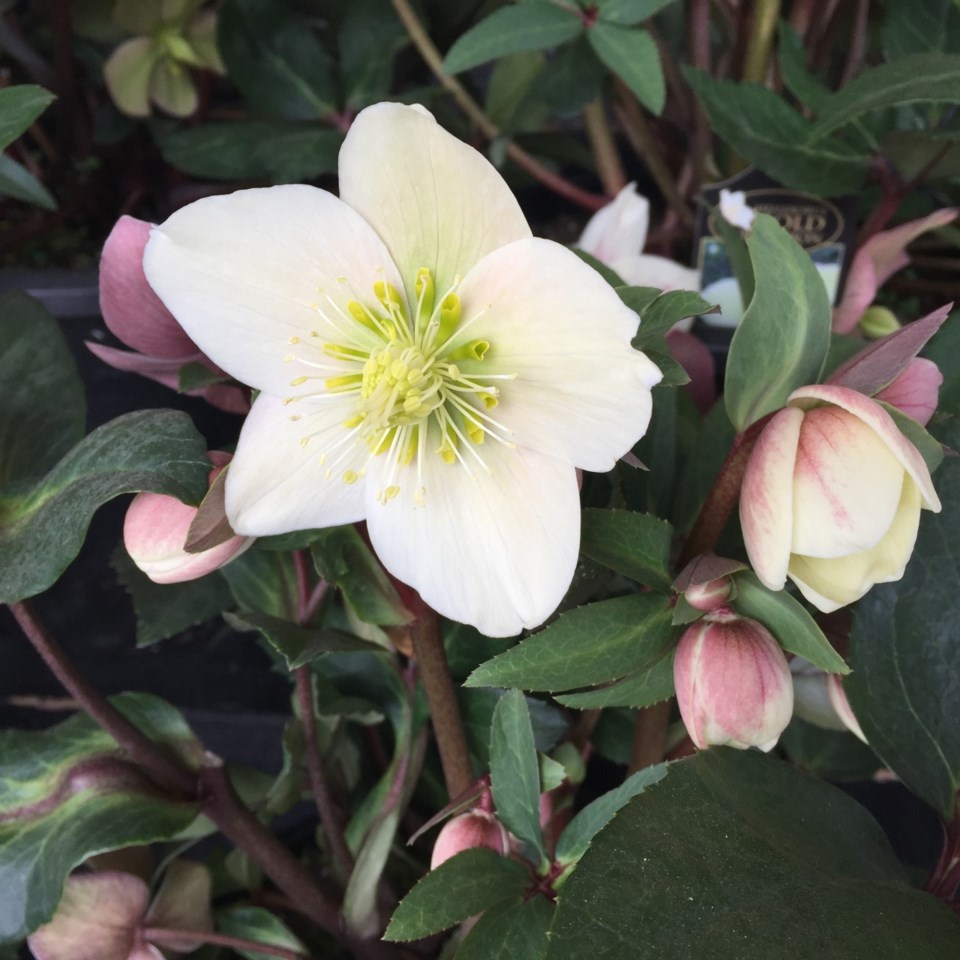The following column was submitted to the Tri-City News from Brian Minter — master gardener, best-selling author, Order of Canada recipient and co-owner of .
I always chuckle to myself at this time of year when I hear the term "Christmas Rose" because for many folks it creates the expectation of a rose that blooms in winter at Christmas.
Well, it does bloom at Christmas, however, it’s not a rose but a beautiful, winter-blooming perennial called Helleborus niger.
An ancient garden plant, Helleborus niger has a long history as a must-have plant.
With a sense of pride, my grandmother always placed a bouquet of cut hellebore stems on her Christmas table. From the 1960s through the 1980s, they were hard to find in garden stores.
Hellebores were difficult to dig up and divide, and growers often had poor results when repotting them. Two things changed all that.
With the advent of tissue culture, plant clones could be grown in a laboratory and sold as plantlets or plugs. By making the production process far easier, the numbers and availability of hellebores began to ramp up.
Another development really changed the entire complexion of the Christmas rose.
The Heuger family in Germany spent years breeding two features into hellebores to make them much more interesting and valuable in the home garden.
First, unlike the nodding flowerheads of the old-fashioned varieties, the Heugers bred their flowers to hold an upright position so the ‘face’ of the blooms could be seen. The other improved characteristic is their early- and long-blooming habit in a winter garden. In the Pacific Southwest, the first hellebores to bloom in mid-November are "Jacob" and "Josef Lemper."
Their pure white flowers start early and continue through the winter, usually until late March.
Several varieties make up Heuger’s lovely "Gold Collection" and they share a few outstanding characteristics: They flower the first year with a very long bloom period; they have diverse flowers and foliage; most perform as well in containers as in the ground; they are long-lived; and they can be used as ground covers in shady locations.
"Merlin" has rich green foliage with lighter veins and plum-coloured stems, and "Spring Party" has green and white marbled foliage that is attractive year-round. A later-bloomer, "Pink Frost" grows rather large (up to 36 inches, 90cm) with masses of burgundy and white buds that open to a soft pink and mature to a rich dark pink. It’s a showstopper.
"Love Bug" is a smaller version of "Pink Frost" and is ideal for containers. A new series, called "Ice ‘n’ Roses," has red, rose or white flowers contrasted by rich dark foliage, and their blooms are one-and-a-half times larger than traditional blossoms.
It has always been assumed that hellebores are happiest in partially shaded locations out of the hot afternoon sun. However, don’t sell them short because they will tolerate hot, full sun locations, though you might get the odd burnt leaf that can simply be picked off. Good drainage and humus-rich soil are ideal. In late summer and early fall, hellebores produce an abundance of new foliage, making the plant look lush and gorgeous.
Because of their resilience, white Helleborus nigers can be brought inside in a cool, well-lit room to be enjoyed as a potted plant for a short period, and then planted outside after Christmas as a hardy garden perennial.
Hellebores provide pollinators with fresh pollen in winter months when there is little else available. In mild winters, I’ve often seen bees collecting pollen from hellebore blossoms.
So, for many reasons, hellebores bring fresh life and colour to our winter gardens. We need to thank the Heuger family in Germany for developing many amazing new varieties. There is a good supply now in most garden stores, so why not add a few to your winter landscape?
